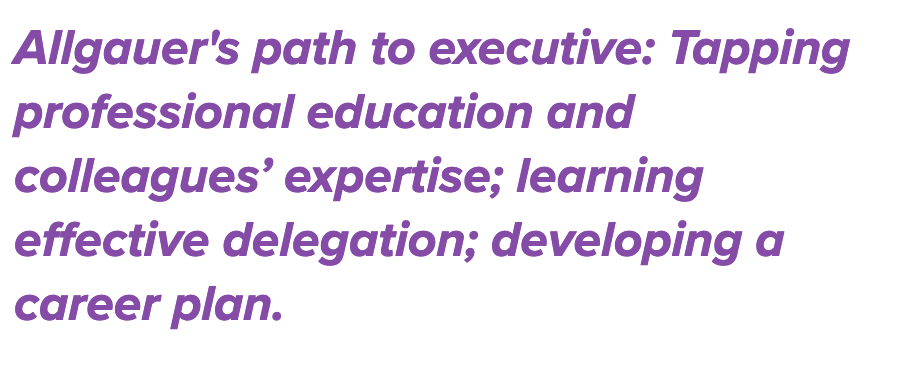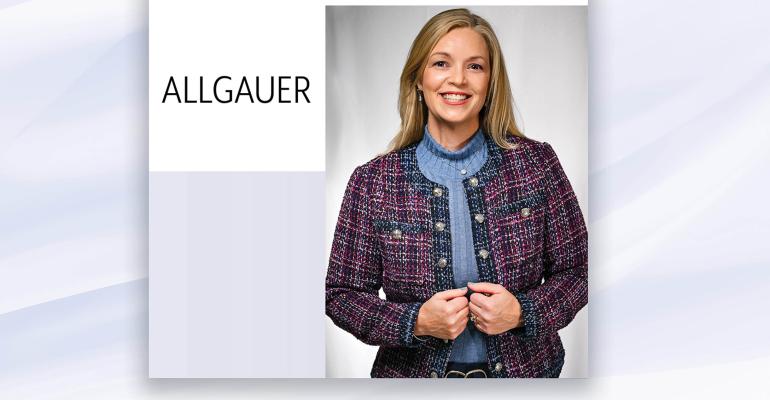Ever since 2003, when she became the associate director of meetings and convention services for a nursing association, Michelle Allgauer has been passionate about learning more about program design, contracting, budgeting, revenue streams, team leadership, and other aspects of event planning from fellow industry members.
However, it was actually the nurses within that association who motivated Allgauer to strive for the Certified Meeting Professional designation. And taking that initiative, she says, was a significant step towards arriving at her current position as senior vice president, education & engagement, for the Financial Services Institute.
 “The nurses were such an inspiration—I wanted to show people that I was just as passionate about my profession as the nurses were about theirs,” she recalls. “I joined a study group for the CMP exam, and I was exposed to so many things about meeting planning that were not part of my job at that time.” In fact, she felt so strongly about the impact of both formal and peer-to-peer education that she joined Meeting Professionals International’s Potomac chapter, and by 2010 had become president of the chapter.
“The nurses were such an inspiration—I wanted to show people that I was just as passionate about my profession as the nurses were about theirs,” she recalls. “I joined a study group for the CMP exam, and I was exposed to so many things about meeting planning that were not part of my job at that time.” In fact, she felt so strongly about the impact of both formal and peer-to-peer education that she joined Meeting Professionals International’s Potomac chapter, and by 2010 had become president of the chapter.
Her involvement in the planner community was rewarded a few years later, when Allgauer faced a crisis situation with FSI’s annual meeting only weeks after becoming a vice president. “We found out in the last week of September that our headquarters hotel breached the contract for our January conference,” she recalls. “We had to find a new city with a lot of available space on short notice. I was stumped, and I kept thinking that I might lose my job over a situation I was not responsible for.”
But Allgauer relayed her dilemma across her professional network “and the response was tremendous; we found a great destination with a hole to fill in January.” The lesson: “You sometimes don’t have the right resources internally and you need to bounce ideas off of other experienced people from industry associations, private groups for planners on social media, and
other networks.”
Sharpen Existing Skills and Build New Ones
Allgauer finds that many planners already have the core skills to move to the next level; it’s simply a matter of applying those skills to a wider vision for their organizations.
For example, “innovation, creativity, and positivity are central to both event planning and management, along with seeing what’s coming in the near future and having a structure for setting and accomplishing goals in that changing environment,” she says. “So, if you elevate your mindset above your day-to-day role and look across your organization for opportunities to make positive change,” planners can get noticed by management.
In that vein, “we don’t have a large events team at FSI, so my job involves reaching out to other departments to better understand how to best get things done. That means working with the sponsorship team to find out what experiences might work to bring us more revenue. It also means helping the marketing team tap into attendee information so they can target the potential audience in the most effective way. It’s important to be involved in those conversations, and share ideas you’ve found outside your organization.”
One skill that Allgauer had to improve upon to succeed as an executive was delegation—a common challenge among planners. Her solution has been to learn to trust: “I tell my people, ‘This is what the end product needs to look like, and I don’t care how you get there as long as you stay within budget or come up with a revenue idea that can expand the budget. Let’s check in with each other at certain intervals to make sure you’re moving forward and have what you need. But if you need help at any point, just ask.’”
Another competency that helps Allgauer delegate effectively is recognizing people’s strengths and “putting each person in a position where she can most often use those strengths. An executive should set things up for people to do their best work as often as possible. But again, we’re a small team, so we also have to work on things we don’t love doing. And if someone wants to take a class to get better at something, I am fully on board with that.”
Lastly, moving up the ladder on Allgauer’s team requires articulating a personal plan. “To the team members who tell me they really want a promotion, I say, ‘What does that promotion look like? What exactly do you want to do, and what skills do we need you to acquire so I can make that recommendation? Let’s create a plan of the steps you need to take, and the time frame for getting there.’”
More Executive Profiles
• The Path to Executive: Japan as a Proving Ground
• The Path to Executive: Grab the Stretch Assignment (and a Mentor)
• The Path to Executive: Working with an Outcomes Mindset





